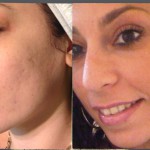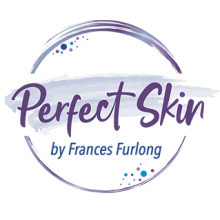This month is the final article of the skin deep issue series, since writing the pieces on scars and rosacea there has been an overwhelming response with clients contacting me with regards to
helping these stressful skin conditions. There is no doubt that the condition acne is equally as emotionally hard for the sufferer. It’s a myth that only teenagers get spots. While 90 per cent of teens experience acne (the medical term for spots), half continue to be affected as adults. The symptoms of acne in adults are similar to those in teenagers, and include blackheads and
whiteheads, inflamed spots, pustules and cysts.
What Causes Acne?
To understand acne, you need to know how your skin works. The pores in your skin contain oil glands. When you hit puberty, there’s an increase in sex hormones called androgens. The excess hormones cause your oil glands to become overactive, enlarge, and produce too much oil, or
sebum. When there’s too much sebum, the pores or hair follicles become blocked with skin cells. The increase in oil also results in an overgrowth of bacteria called Propionibacterium acnes.
-Hormonal changes related to birth control pills, menstrual periods, and pregnancy can trigger acne
– Other external acne triggers include heavy face creams and cosmetics, hair dyes, and greasy hair products – all of which can increase blockage of pores! Your genetics
– if your parents or grandparents struggled with acne, you might do too.
-Smoking – especially for older people.
-Being stressed.
-Using the wrong skincare products for your skin type.
Types of Acne Lesions
If blocked pores become infected or inflamed, a pimple – a raised red spot with a white centre – forms. If the pore clogs, closes, and then bulges, you have a whitehead. A blackhead occurs when the pore clogs, stays open, and the top has a blackish appearance due to oxidation or exposure to air. When bacteria grow in the blocked pore, a pustule may appear, meaning the pimple becomes red and inflamed. Cysts form when the blockage and inflammation deep inside pores produce large, painful lumps beneath the skin’s surface.
Additional Acne Triggers
Clothing that rubs your skin may also worsen acne, especially on the back and chest. So can heavy sweating during exercise, and hot, humid climates. Stress is known to trigger increased oil production, which is why many teens have a new crop of pimples during exam times and adults going through emotional times in their lives.
What is the Treatment for Acne?
The treatment usually depends on how serious the problem is. For instance, if you have an
occasional inflamed pimple, you may use daily skincare products. I can’t stress enough the
importance of hygiene, using warm water twice a day with an antibacterial wash suitable for acne prone skin and superficial scarring like glycolic acid or glycolic/salicylic wash it helps to renew and refine the skin and deeply cleans the pores and soaks up excessive sebum on the skin
surface.
Glycolic acid
Retinoids (medications that come from vitamin A)
Salicylic acid
Various fruit acids
Benzoyl peroxide reduces oil production and has antibacterial properties. But use it carefully, as it might leave your skin dry and flaky. Try to use it just before bedtime.
Antibiotics
Skin peeling in clinic
Plexr
What can you do yourself to help?
There are also measures you can take yourself to help ease spots:
Clean up your diet– Research has found that high-dairy, high-glycaemic index diets may be linked to acne. Try basing your diet on complex carbs like whole grains, fruit and vegetables, and reduce your dairy intake – try alternatives such as calcium-enriched soya milk.
Take skin-supporting supplements – studies have shown that people with acne might have low
levels of zinc. Increase levels in your diet by eating more zinc-rich foods, such as seafood, meat and quinoa, or take a supplement.
Cut stress – Try relaxation techniques such as yoga, or simply taking time out to read or go for a walk can be effective
